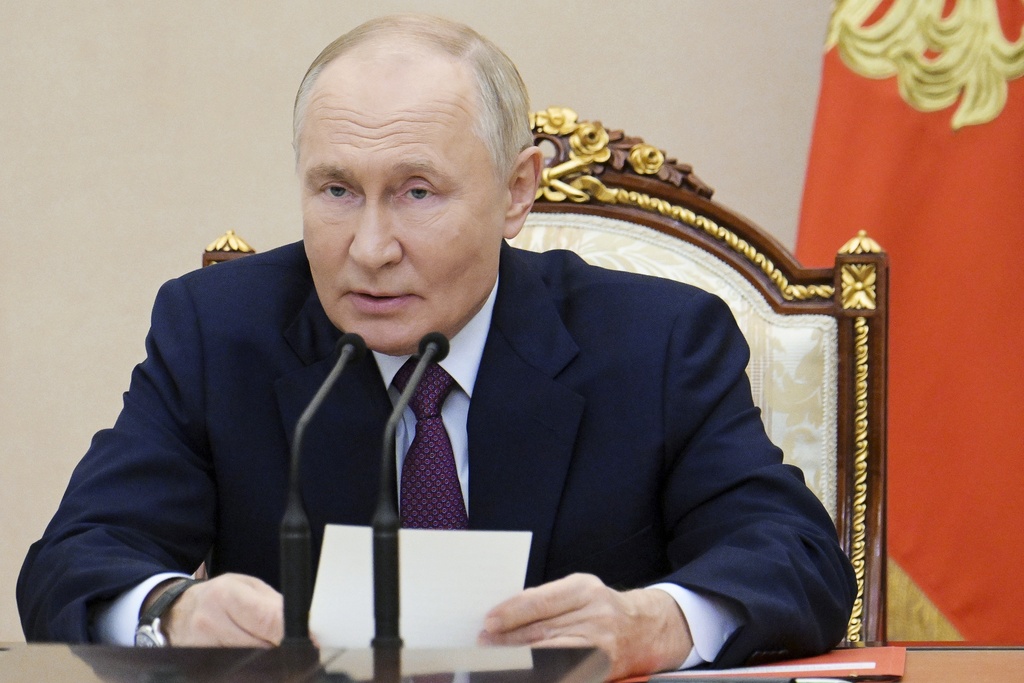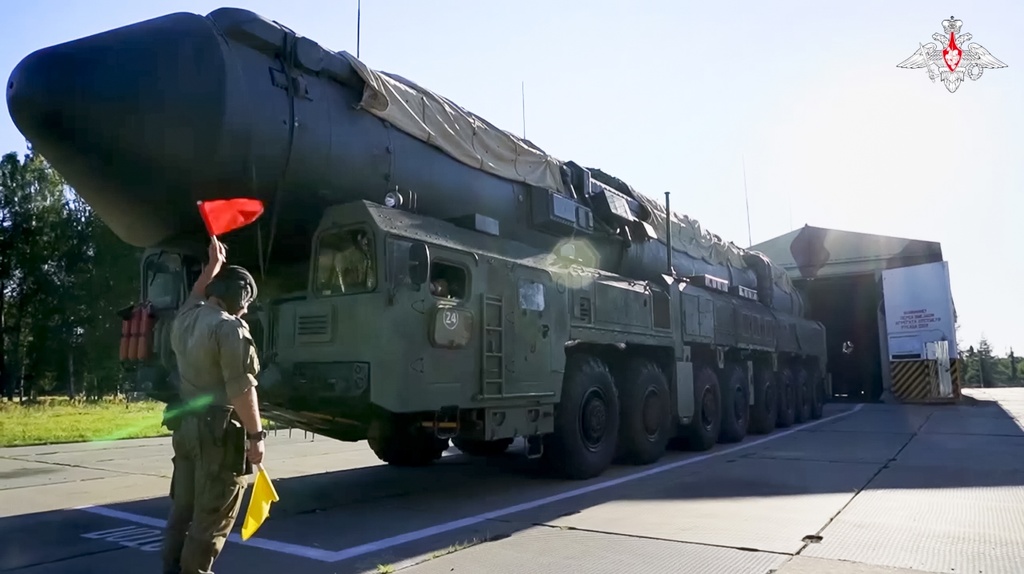Russia’s Revamped Nuclear Doctrine Raises Global Alarm \ Newslooks \ Washington DC \ Mary Sidiqi \ Evening Edition \ Russia’s updated nuclear doctrine, signed by President Vladimir Putin, broadens scenarios for using nuclear weapons, including responses to conventional attacks supported by nuclear powers. The revised policy raises concerns about escalation as Ukraine uses U.S.-supplied long-range missiles. Kremlin officials and experts warn the changes reflect a dangerous shift in global security dynamics.

Putin’s New Nuclear Doctrine: Key Points
- Lower threshold for use: Nuclear weapons can now be used after conventional attacks by a nuclear-backed nation.
- Conditions for nuclear response: Includes missile launches, threats to sovereignty, and attacks on key facilities.
- Focus on deterrence: Doctrine emphasizes nuclear weapons as a means of retribution and conflict prevention.
- Ukraine’s long-range strikes: Recent missile use by Ukraine prompts warnings of potential escalation.
- Global reaction: Experts express alarm, while the U.S. sees no immediate change in Russia’s nuclear posture.
Deep Look
This update follows reports of Ukraine using U.S.-supplied ATACMS long-range missiles to strike Russian territory, including six missiles hitting the Bryansk region. Kremlin officials have framed these actions as a direct provocation, with spokesman Dmitry Peskov stating such strikes could now fall under the conditions justifying a nuclear response.
Key Changes in Russia’s Nuclear Doctrine
The revised doctrine outlines several scenarios for nuclear use, expanding on previous policies. First introduced in 2020, the doctrine described nuclear weapons as a last-resort measure to protect Russia’s sovereignty and deter aggression. The latest iteration broadens these conditions:
- Retaliation for nuclear or mass-destruction attacks: Includes strikes against Russia, its allies, or Russian forces abroad.
- Ballistic missile launches: Any reliable information about missile launches targeting Russian territory or allies could prompt nuclear action.
- Attacks on critical facilities: Strikes on key government or military sites that could undermine Russia’s retaliatory nuclear capabilities may trigger a response.
- Conventional aggression threatening sovereignty: If conventional military attacks jeopardize Russia’s or Belarus’ territorial integrity, nuclear retaliation is possible.
- A new provision for nuclear-backed aggression: Even if an attack originates from a non-nuclear state, but is supported by a nuclear power (e.g., NATO countries aiding Ukraine), Russia may view it as joint aggression, justifying a nuclear response.
Why Now? The Context Behind the Update
The timing of the revised doctrine is no coincidence. The announcement came just two days after Washington approved Ukraine’s use of longer-range ATACMS missiles, which Kyiv promptly employed to hit Russian territory. These strikes have been framed by the Kremlin as a potential crossing of red lines.
Implications for Global Security
Experts and officials have expressed concerns about the chilling implications of the doctrine’s changes:
- Strategic ambiguity: The doctrine’s broad language keeps adversaries guessing, increasing uncertainty and the risk of miscalculations.
- Nuclear brinkmanship: By lowering the threshold for nuclear use, Moscow signals its willingness to escalate in response to perceived provocations.
- Potential for misinterpretation: Ambiguities in the doctrine could lead to misjudgments, particularly during high-stakes conflicts like the war in Ukraine.
Dmitry Medvedev, deputy head of Russia’s Security Council, took an even more aggressive tone, warning that NATO’s involvement in Ukrainian strikes could be classified as a bloc-wide attack on Russia. “In such a scenario, Russia reserves the right to retaliate with weapons of mass destruction,” Medvedev stated, hinting at a wider conflict.
Western Reactions and Assessments
Despite the heightened rhetoric, the U.S. National Security Council reported no changes in Russia’s nuclear posture. An anonymous official stated, “We have not seen any reason to adjust our own nuclear posture or doctrine in response to Russia’s statements today.”
A Dangerous Crossroads
The revisions to Russia’s nuclear doctrine mark a critical juncture in the Ukraine war and global security. As Western nations continue to supply advanced weapons to Kyiv, the risk of miscalculation or unintended escalation looms large.
Stanovaya noted that Putin could use the doctrine’s ambiguity to pressure the West into peace negotiations on Moscow’s terms. “Putin may seek to present the West with two stark choices: ‘Do you want a nuclear war? You will have it,’ or ‘Let’s end this war on Russia’s terms,’” she wrote.
Looking Ahead
The updated nuclear doctrine underscores the fragility of global stability in the face of heightened tensions and advanced weaponry. While Moscow’s changes may be aimed at deterrence, they also increase the stakes for misjudgment and escalation.
Moving forward, the international community faces urgent challenges in managing the risks associated with Russia’s more aggressive nuclear posture. Diplomacy, arms control agreements, and careful strategic communication will be essential to preventing a catastrophic spiral of conflict.
Russia’s Revamped Russia’s Revamped Russia’s Revamped Russia’s Revamped







